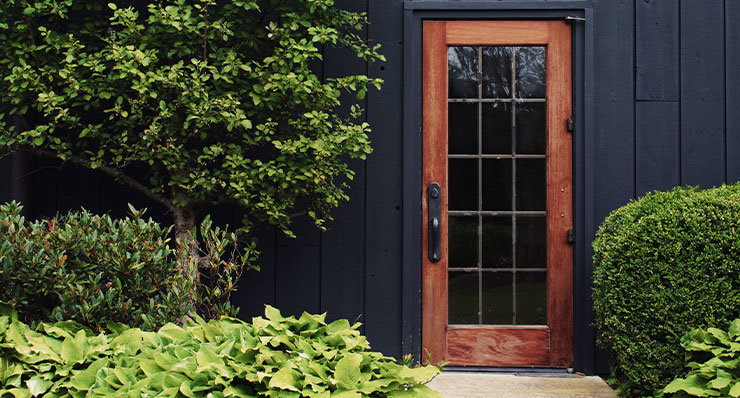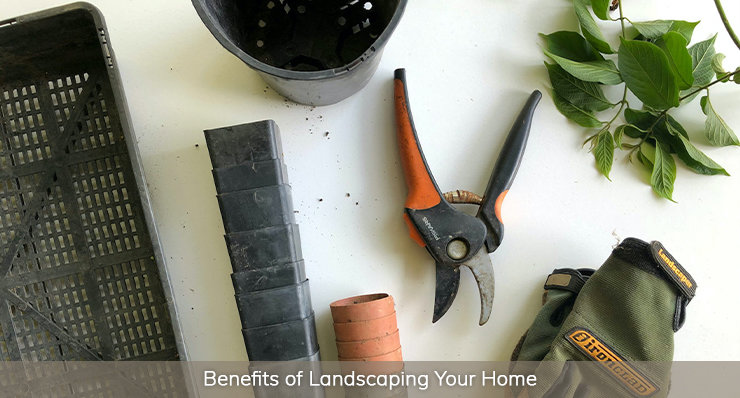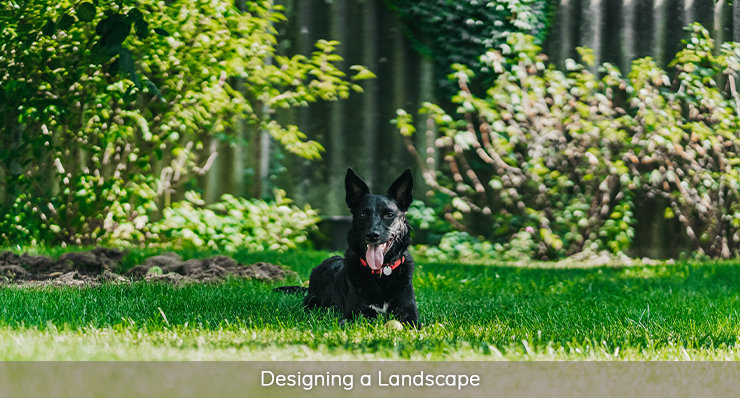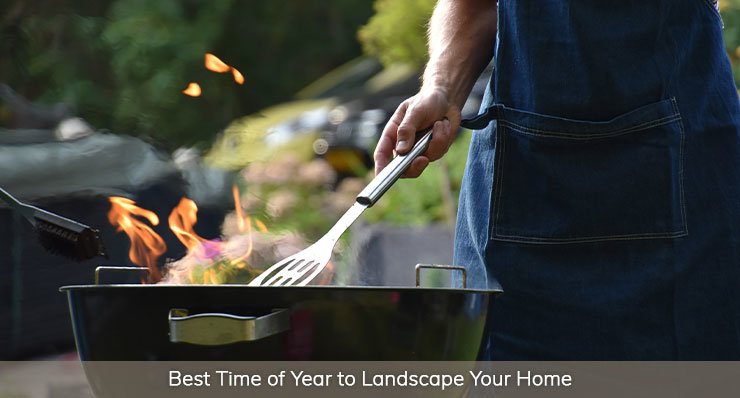
When looking for a new home, one might be looking at more than the inside of the property. It is important to see how the outside is utilized as well. We have landscaping tips for your home and we’ll show you how to make the best of your space. During these times of COVID, many people are staying home and finding new hobbies, one of those being landscaping. Whether you are new to landscaping and looking for a hobby, or just wanting to improve your home, we have tips for you!
Benefits of Landscaping Your Home
While learning some of these landscaping tips for your home, you may find there’s a lot of benefits that come along with it, besides providing curb appeal. One of the major benefits that landscaping provides is that it is good for the environment. Grass and tress provide cooler temperatures and can actually lower air conditioning needs. If you have cement or paved areas, planting trees or grass can help drastically reduce temperatures. Trees are also great sources of oxygen as they produce enough to supply four people every day. During storms, landscapes can be helpful because they act as runoffs. Woody plants along water also reduces erosion and flooding. Outdoor living areas can actually even improve quality of life, especially in areas with cities. Green spaces reportedly lower stress and are shown to reduce blood pressure. Economic benefits can come from landscaping. As a homeowner, landscaping can be a great investment to increase market value. When adding water features, there is more happening than visually pleasing aesthetics. They bring natural sound and new wildlife to your property. Retaining walls can be extremely helpful to prevent erosion, especially if your property is located on a hill. The barrier the wall creates is practical and also enhances your landscaping. They can provide areas for pathways, and additional gardening, or maybe even an outdoor seating area.
Designing a Landscape
Some landscaping tips for your home consist of using design elements. Like many other forms of designs, there are principles that can be used as guidelines. The elements below can be helpful for making decisions on placement:
Simplicity – A simple precise design can be easier to maintain while also having functionality. Prioritize what is important in order for the design not to become cluttered.
Variety – Various different shapes, sizes, and selections should be present. This provides diversity and it creates visual interest.
Balance – Balance is important because even though you might not notice it, it can carry a visual “weight” making certain aspects unappealing.
Emphasis – Accentuating features of the design such as texture or color can give interest to a viewer. Accent areas are meant to standout but can also help in softening other features you might not want noticed.
Sequence – This is important for transitioning sizes, shapes, and textures. It is a good idea to try using gradual changes that don’t appear so harsh.
Scale and Proportion – Scale is the size of components within a landscape and proportion is how they relate to one another. These are important factors that help to bring balance.
Unity – This is the concept of everything working together as one solid creation. For any successful landscape you want things to look like they belong, and with unity, that can be achieved.
Always find a focal point, and think about how certain plants will complement it, along with your house (example: front door). Use ground covers they are low maintenance, and complement grass. Create a pathway, typically one that directs from one location to another. When thinking about foundation plants to go in front of the house, consider how they will grow. Will they look good in the next few years? Or will they block every view? If you’re looking for privacy, it doesn’t always have to be a hedge. Consider a barrier of shrubs. They of course can range in height and size to accommodate. If wildlife like deer are prevalent in your area, consider shrubs that keep their form without some leaves missing. It is important to take lighting into account, as your house is a large sun blocker. Plant certain plants in areas that do better with or without shade in certain parts outside in relation to your house. Fix up your driveway by adding borders along the drive, as this tends to give off a more finished look! Add a tree that has a pop of color. Flowering trees provide great curb appeal and they tend to be smaller, so they don’t block the house. Remember to keep it simple and don’t over crowd. It is important to keep your focal point in mind, so your landscaping keeps a viewer on one spot, rather than all over the place, tending to look overdone and crowded.
Choosing backyard landscaping designs should be unique to your lifestyle and how you personally want to use the space. Consider aspects such as, do you have kids? Do you want an entertainment area for guests? Cookouts? Relaxation? These are all factors to be considered when designing your yard. If you want to use your space for all of the above, then it is important to turn it into a multi-functional space that can be used for many different uses. This can be achieved by creating “outdoor rooms” that serve distinct purposes, just like the ones in your house! Create a patio or deck for a gathering area, grill space, and maybe even add a fire pit! Poolscapes are popular as well, providing entertainment and they’re great for kids. Just remember that pools require regular maintenance. Create a meditation garden with beautiful flowers, if you’re looking for that relaxing area to go and decompress. Add a water feature to add to the serenity and peacefulness. You can also always add the classic privacy fencing with shrub borders. Fencing can also be omitted completely as shrubs themselves can provide screening. Even bamboo can do the trick!
Popular low-maintenance plants for landscaping include:
Shrub – Barberry
Shrub/Small Tree – Smoke Tree
Flower (Perennial) – Peony
Tree – Hawthorn
Groundcover – Liriope
Ornamental Grass – Feather Reed Grass
Ornamental Grass – Ribbon Grass
Ornamental Grass – Fescue
Tree – Thornless Honey Locust
Shrub – Juniper
Flower (Perennial) – Geranium
Flower (Perennial) – Dianthus
Flowering Shrub – Hydrangea
Best Time of Year to Landscape Your Home
The best time to use these landscaping tips for your home is during the spring, particularly during the months of April and May. Starting during these months gives plants the opportunity to grow and adjust to the summer and fall climates to come. Just always remember to avoid winter months, due to the possibility of freezing. If you do attempt landscaping in the fall, some useful tips are to use mulch as it acts as insulation, water plants frequently as it will help them survive cold dry winds, and prune off dead and broken areas, so the cold winter climate does not affect the plant.
Using our Landscaping Tips for Your Home
We hope your landscaping tips for your home help you make the best of your property, whether it be for hobby or value purposes. One of our favorite things about living in Western North Carolina is the beautiful scenery and potential of the mountainous land. If you are looking for a home yourself here in our mountains, the agents at Landmark Realty Group are real estate experts and are here to help!
Use any of our landscaping tips? Tag us on Instagram @landmark_realty_group and use #LRGLandscapingTips
Posted by Landmark Concierge on



Leave A Comment